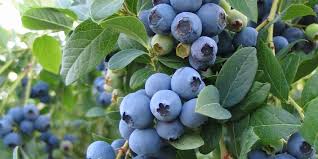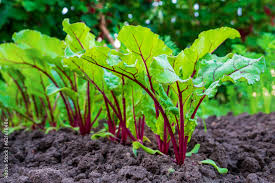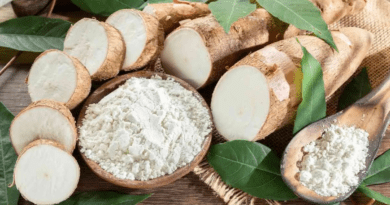Currants Berries: Economic Importance, Uses and By-Products
Currants Berries are small, round, and vibrant berries that belong to the Ribes genus. They are often classified into three main varieties: red currants, black currants, and white currants, each with its own distinct characteristics.
Red currants are tiny berries, typically around the size of a small marble or pea. They are translucent and vary in color from pale pink to deep red.n Red currants have a tart and tangy flavor with a hint of sweetness. They are not typically eaten raw but are commonly used in cooking, baking, or making jams and jellies.
Red currants are versatile in the kitchen and are often used to make sauces, syrups, and desserts. They pair well with other fruits and can be used to add a tart contrast to sweet dishes. Black currants are slightly larger than red currants and have a deep purple-black color when ripe. They are round and have a glossy skin. Black currants have a bold and intense flavor profile, characterized by their rich, sweet-tart taste with earthy and slightly astringent notes.
Black currants are often used to make jams, jellies, and liqueurs. They are also used in baking, desserts, and beverages like juices and flavored teas. Their strong flavor makes them a distinctive ingredient in various culinary applications.
hite currants are the rarest of the three and are similar in size to red currants. They have a pale yellow, almost translucent color, and are often mistaken for underripe red currants. White currants have a milder and sweeter flavor compared to red and black currants. They are less tart and have a delicate, slightly floral taste. White currants are often used in desserts, salads, or as a garnish due to their attractive appearance and sweet flavor. They can be used interchangeably with red currants in most recipes.
All types of currants are rich in vitamins, particularly vitamin C, and are a good source of antioxidants. They are commonly cultivated in temperate regions and are used in a wide range of culinary applications, from jams and preserves to baked goods and beverages. Additionally, currants are valued for their ornamental appeal in gardens due to their attractive clusters of berries and distinctive foliage.
The Economic Importance and Uses of Currants Berries

Currants berries, which include red currants, black currants, and white currants, have several economic importance and uses in various industries.
Here are some of the key uses and economic significance of currant berries:
1. Fresh Consumption: Currants are used in culinary applications, such as salads, desserts, and fruit bowls. They have a tangy, slightly tart flavor that complements both sweet and savory dishes.
2. Jams and Jellies: Currants are popular for making jams, jellies, and preserves due to their natural pectin content, which helps in setting and thickening these products.
3. Baking: Currants are used in baking, especially in pastries, muffins, scones, and cakes, adding flavor and texture to the products.
4. Wine: Black currants, in particular, are used to make currant wines, which are popular in some regions. These wines have a unique flavor and are sometimes blended with other fruits or used in liqueurs.
5. Juices: Currants are used to produce juice concentrates that can be reconstituted into juice drinks. Their tartness and vibrant color make them an attractive addition to various beverage products.
6. Health Products: Currant berries are rich in vitamins (e.g., vitamin C) and antioxidants (e.g., anthocyanins), making them a valuable ingredient in dietary supplements, health foods, and herbal remedies.
Read Also: Currant Pistil: Economic Importance, Uses and By-Products
7. Skincare Products: Currant extracts are used in cosmetics and skincare products for their antioxidant properties, which are believed to have anti-aging and skin-nourishing benefits.
8. Fragrances: The aroma of currant berries is sometimes used in perfumes and fragrances.
9. Traditional Medicine: In some traditional medicine practices, currants are used for their potential health benefits, including anti-inflammatory and digestive properties.
10. Nutraceuticals: Currant-based nutraceuticals, such as capsules or extracts, are marketed for their potential health-promoting properties.
11. Plant Sales: The cultivation of currant bushes for their berries is a source of income for the horticultural industry, as gardeners and home growers purchase currant plants.
12. Landscaping: Currant bushes are sometimes used in landscaping due to their attractive foliage, colorful berries, and ease of maintenance.
13. Economic Value: In regions where currants are grown commercially, they contribute to the local economy by generating income for farmers and creating jobs in harvesting, processing, and marketing.
14. Export Crop: Some countries export currants and currant products to international markets, contributing to foreign exchange earnings.
15. Food Additives: Currant extracts and flavors are used in the food industry as natural additives to enhance the taste and color of various products.
16. Natural Dye: Currants can be used as a source of natural dye, especially black currants, which produce a purple-black pigment that has been historically used for dyeing fabrics and foods.
17. Medicinal Extracts: Currant berries, particularly black currants, are a source of valuable bioactive compounds like anthocyanins, which have shown potential health benefits. Pharmaceutical companies may extract these compounds for use in the development of drugs and supplements.
18. Livestock and Poultry: Currant berries can be used as a supplemental feed for livestock and poultry, providing essential nutrients and antioxidants that can improve the health and productivity of animals.
20. Companion Planting: In gardening and agriculture, currant bushes are sometimes used as companion plants. They can help deter certain pests and attract beneficial insects, contributing to sustainable pest control practices.
21. Botanical Studies: Currant plants are used in botanical research and educational settings to study plant biology, genetics, and horticulture, contributing to scientific knowledge and educational materials.
22. Breeding Programs: Currant species are important genetic resources for breeding programs aimed at developing new fruit varieties with desirable traits such as disease resistance, yield, and flavor.
23. Homegrown Produce: Many individuals grow currant bushes in their gardens or allotments, both for personal consumption and as a hobby. This contributes to local food production and reduces the need for store-bought fruit.
24. Traditional Dishes: In some cultures, currants are used in traditional dishes and recipes that have cultural significance and are passed down through generations.
25. U-Pick Farms: Currant farms that allow visitors to pick their own berries can attract tourists during the harvest season, contributing to rural tourism and local economies.
26. Wildlife Attraction: Currant bushes can attract birds and pollinators, enhancing biodiversity in gardens and natural landscapes.
27. Educational Programs: Agricultural and Environmental Education: The cultivation of currants, along with other berries and fruits, is often part of educational programs that teach sustainable farming practices and promote environmental awareness.
The Products and By-products That Can Be Derived From Currants Berries

Currants are small, edible berries that belong to the Ribes genus. There are three main types of currants: red currants, black currants, and white currants. These berries can be used to produce various products and by-products.
Here’s a list and explanation of some of the products and by-products derived from currants:
1. Fresh Currants: The most straightforward product is the fresh berries themselves. They can be eaten raw, used in salads, desserts, or as garnishes.
2. Currant Jam/Jelly: Currants are commonly used to make jams and jellies. These preserves are made by cooking currants with sugar and pectin until they thicken. They can be enjoyed on toast, scones, or as a condiment.
Read Also: Currant Sepals: Economic Importance, Uses and By-Products
3. Currant Syrup: Currant syrup is made by simmering currants with sugar and water, then straining the mixture. It can be used as a topping for pancakes, waffles, or desserts, or mixed into beverages.
4. Currant Juice: Currant juice is extracted by pressing or mashing the berries. It can be consumed as a refreshing drink, used as a base for cocktails, or diluted with water to make a fruit-flavored beverage.
5. Currant Liqueur: Currants can be used to make liqueurs by infusing them in alcohol, often with sugar. Currant liqueurs have a sweet and fruity flavor and can be sipped on their own or used in cocktails.
6. Currant Wine: Some varieties of currants, particularly black currants, are used to make wine. Currant wine can be sweet or dry, and it’s enjoyed as a dessert wine or for pairing with certain dishes.
7. Currant Baked Goods: Currants are used as a filling or topping in various baked goods, including pies, tarts, muffins, and cakes. They add a tart and fruity flavor to these treats.
8. Currant Compote: Currant compote is a cooked fruit mixture made by simmering currants with sugar and sometimes spices. It can be served as a side dish, dessert topping, or a filling for pastries.
9. Currant Ice Cream/Sorbet: Currants can be blended into ice cream or sorbet to create a fruity and refreshing frozen dessert.
In conclusion, currant berries have a wide range of applications and economic significance across various industries, from food and beverages to healthcare, agriculture, and beyond. Their versatility, nutritional value, and unique flavor profile make them a valuable crop with diverse uses and potential for further research and innovation.
Read Also: The Ultimate Step-by-Step Guide to Vegetable Gardening









